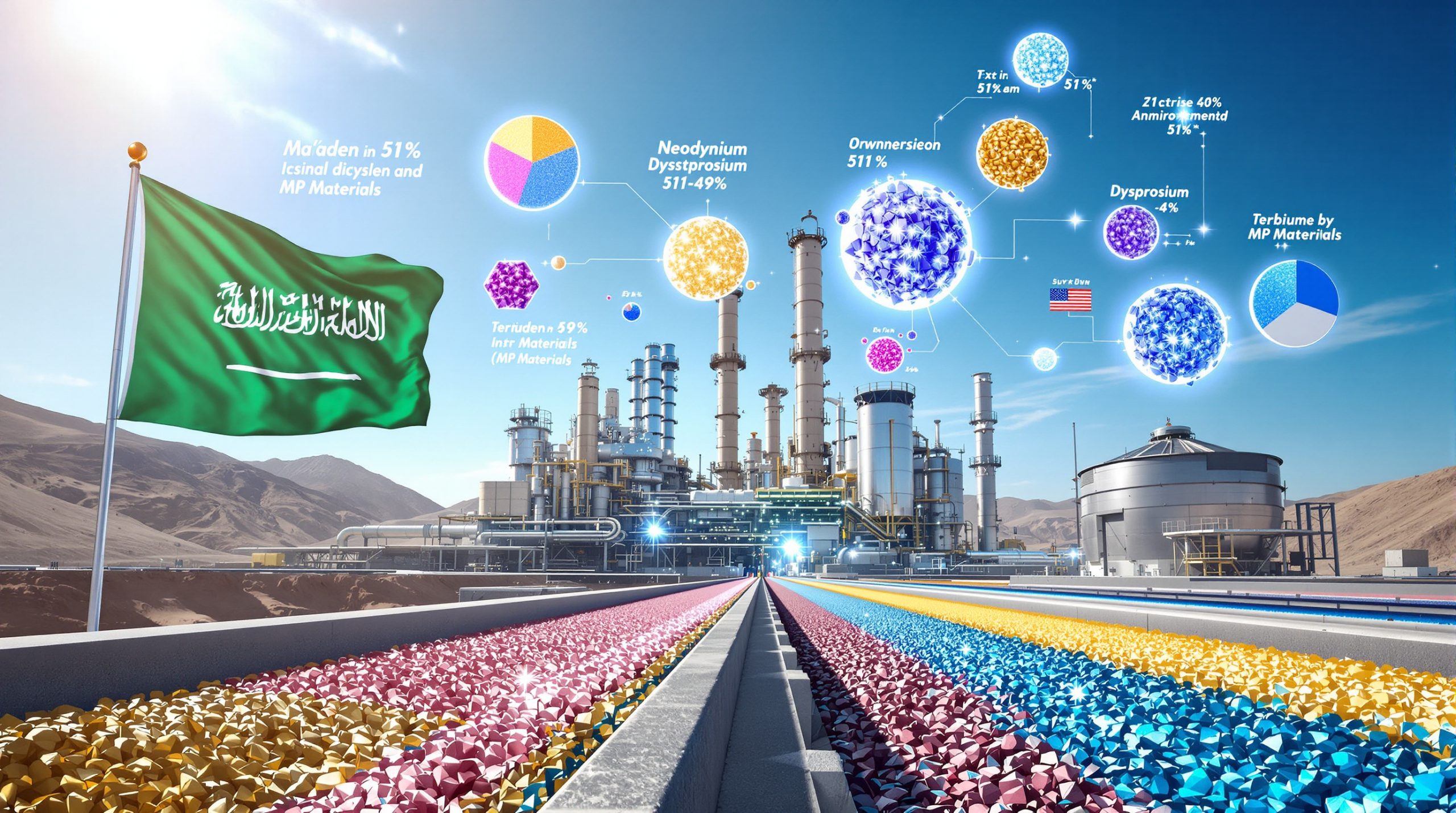The Simandou iron ore project represents a fundamental shift in global mining dynamics, positioning Guinea's southeastern mountain ranges as a critical challenger to Australia's decades-long dominance in premium iron ore supply. Located in the Nzérékoré Region near borders with Sierra Leone and Liberia, this massive undertaking has captured international attention as potentially the most significant iron ore development since Australia's Pilbara region. Furthermore, the project's emergence comes at a time when iron ore price trends indicate significant market volatility ahead.
Geographic Location and Scale Overview
Situated on rugged mountain ridges in Guinea's southeastern territories, the Simandou deposit occupies a strategic position within West Africa's mineral-rich corridor. The project's remote location, while presenting logistical challenges, offers proximity to Atlantic shipping routes that could serve both Asian and European steel markets more efficiently than traditional Australian suppliers.
The scale of recoverable resources exceeds 4 million tonnes, establishing Simandou as the world's largest undeveloped high-grade iron ore deposit. This massive reserve base provides the foundation for sustained production spanning multiple decades, potentially reshaping global supply chains and pricing mechanisms.
Project Scope and Infrastructure Requirements
The infrastructure demands for Simandou represent one of the most ambitious mining logistics projects in recent history. Development requires construction of over 600 kilometres of new railway network connecting the mountain-based extraction sites to deep-water port facilities capable of accommodating modern bulk carrier vessels.
Transportation logistics present unique engineering challenges, with two separate mining operations positioned approximately 100 kilometres apart yet sharing centralised rail and export infrastructure. This integrated approach maximises operational efficiency while minimising environmental impact across Guinea's challenging terrain.
Ore Quality Analysis: Simandou vs. Traditional Suppliers
The Simandou iron ore project's competitive advantage stems primarily from its exceptional ore quality, significantly exceeding grades available from established global suppliers. In addition, this quality differential positions it favourably against surging iron ore miners currently dominating global markets.
Iron Content Comparison Analysis
| Source | Iron Grade (%) | Annual Capacity | Market Position |
|---|---|---|---|
| Simandou Guinea | 65-67% | 120M tonnes (projected) | Highest grade globally |
| BHP Pilbara | ~60%+ | Variable by mine | Premium Australian |
| Rio Tinto Pilbara | Slightly lower | Variable by mine | Standard Australian |
| Fortescue | 56-58% | Variable by mine | Lower grade Australian |
The 10-11 percentage point advantage over lower-grade Australian producers translates directly into processing efficiencies for steelmakers. Higher iron content requires less beneficiation energy and reduces coal consumption during blast furnace operations, creating compelling economic incentives for steel producers to prioritise Simandou ore despite potential premium pricing.
Production Cost Competitiveness
Industry analysis indicates Simandou operations will achieve operating expenses competitive with or below established Pilbara mines. This cost structure, combined with superior ore quality, positions the project to capture premium pricing while maintaining attractive margins throughout various market cycles.
Transportation advantages may further enhance competitiveness, as Atlantic shipping routes to major steel-producing regions offer logistical benefits compared to traditional Pacific routing from Australian suppliers. However, competition from the largest iron ore mines globally remains intense.
Market Supply Impact Calculations
Upon reaching full production capacity, Simandou will contribute approximately 7% of global iron ore supply, representing a substantial addition to an already oversupplied market. The 5-year timeline to achieve maximum output provides existing producers limited time to adapt operational strategies or develop alternative market positioning.
This supply injection coincides with challenging demand conditions, particularly within China's construction sector, potentially amplifying price pressure effects across the global iron ore market.
Ownership Structure and Chinese Strategic Involvement
Chinese entities maintain approximately 75% control across both Simandou mining blocks, reflecting Beijing's strategic objective to secure alternative iron ore supplies independent of Australian dominance.
Block Distribution and Stakeholder Analysis
The project divides into distinct ownership structures:
- Blocks 1 & 2: Operated by Winning Consortium Simandou, featuring complex Chinese government connections
- Blocks 3 & 4: Joint venture including Rio Tinto, Chinalco, and Guinea government participation
- Rio Tinto Position: Subject to 15% ownership by Chinalco, China's state-owned aluminium enterprise
Winning International's ownership structure extends across multiple Chinese government interests, creating integrated control mechanisms that serve Beijing's resource security objectives while maintaining operational flexibility.
Strategic Chinese Investment Patterns
The establishment of China Mineral Resources Group three years ago represents centralised coordination of steel manufacturer procurement strategies. This entity enables collective bargaining power against individual mining companies, fundamentally altering traditional negotiation dynamics that historically favoured suppliers.
State-owned enterprise involvement through Chinalco provides direct government oversight of critical resource flows, ensuring alignment with broader Chinese industrial policy objectives. This structure contrasts sharply with market-driven approaches typical of Western mining operations.
Guinea Government Participation
Guinea's government participation encompasses both equity stakes and revenue-sharing agreements designed to maximise national economic benefits from resource extraction. Local employment projections anticipate substantial job creation, though specific figures require verification through official government sources.
The partnership structure aims to transform Guinea's economy through infrastructure development, technology transfer, and industrial capacity building beyond direct mining operations.
Two Decades of Development Obstacles and Solutions
The Simandou project's extended development timeline reflects both Guinea's political volatility and unprecedented logistical complexities inherent in remote, mountainous mining operations.
Historical Timeline of Major Setbacks
- 1997: Rio Tinto secured initial lease rights for the Simandou deposit
- 2012: Original production commencement target missed due to intervening obstacles
- 2012-2025: Extended development period addressing political, legal, and logistical challenges
Military coups and political instability throughout Guinea disrupted project continuity, requiring repeated renegotiation of agreements and regulatory approvals. Corporate disputes and corruption allegations further complicated development progress, necessitating international arbitration and legal resolution processes.
Technical and Logistical Complexities
The remote mountain location presents engineering challenges unprecedented in modern mining operations. Traditional mining infrastructure models proved inadequate for Simandou's specific requirements, demanding custom solutions for:
- Terrain Navigation: Rail engineering through mountainous topography
- Remote Access: Equipment transportation and workforce logistics
- Environmental Protection: Ecosystem preservation in sensitive regions
- Community Integration: Local population engagement and benefit-sharing
Legal and Regulatory Navigation
International arbitration proceedings resolved ownership disputes and established current operational frameworks. Regulatory compliance across multiple jurisdictions required coordination between Guinea's government, Chinese state entities, and international mining corporations.
The complexity of these arrangements reflects the project's strategic importance to all participating governments and the necessity of balancing commercial objectives with national security considerations.
Market Dynamics and Price Forecast Analysis
The Simandou iron ore project's market entry occurs during a period of fundamental shifts in global iron ore demand patterns, particularly within China's construction and manufacturing sectors. Moreover, concerns about US tariffs' impact on iron ore markets add further complexity to pricing forecasts.
Current Price Pressure Indicators
As of November 2025, iron ore prices hover around US$100 per tonne, facing downward pressure from multiple factors:
- China's Housing Crisis: Continued construction sector downturn reducing steel demand
- Steel Production Overcapacity: Chinese producers offloading excess output globally
- Trade Tensions: Escalating disputes between Chinese buyers and Australian suppliers
The recent confrontation between Chinese authorities and BHP over pricing mechanisms signals a fundamental shift in negotiation dynamics. China's creation of the centralised China Mineral Resources Group enables coordinated pressure against individual mining companies, reversing traditional supplier leverage.
Price Projection Scenarios
Market Consensus Forecasts:
- Moderate Scenario: Stabilisation around US$85 per tonne over two years
- Pessimistic Outlook: Potential decline below US$70 per tonne during supply peaks
- Current Baseline: US$100 per tonne as of November 2025
These projections reflect analyst expectations of permanent price adjustments rather than cyclical variations, driven by structural oversupply and changing demand patterns in key consuming markets.
Australian Revenue Impact Calculations
Australian Treasury analysis demonstrates significant fiscal sensitivity to iron ore price movements:
- Short-term Impact: US$10 price decline reduces tax revenue by AU$400 million
- Long-term Implications: Sustained price pressure could cost up to AU$1.3 billion annually
- Budget Balance Effects: Substantial impact on debt reduction capabilities and fiscal planning
These revenue projections highlight Australia's economic vulnerability to iron ore price volatility, particularly given the sector's outsized contribution to national export earnings. Consequently, Australia's resource export challenges continue to intensify as global competition increases.
Beijing's Comprehensive Resource Dominance Approach
China's mineral strategy extends far beyond iron ore, encompassing systematic control across diverse commodity markets through production dominance and buyer coordination.
Global Commodity Control Statistics
According to Australian Strategic Policy Institute analysis, China maintains production control over 29 commodities, including:
- 22 metals across various industrial applications
- 7 industrial minerals critical for manufacturing processes
This extensive control creates "monopsony" conditions where China functions as the overwhelmingly dominant buyer, even for commodities it doesn't produce domestically. Raw material producers face limited alternative markets, providing Beijing substantial negotiating leverage.
Strategic Export Restriction History
Between 2009 and 2020, China implemented 9 critical mineral export restrictions, exceeding any other supplier nation's frequency of trade limitations. Historical precedents include:
- Japan Supply Disruptions: Political disputes leading to mineral supply interruptions
- US Defence Contractor Threats: Supply chain pressure targeting American military suppliers
- Rare Earth Market Manipulation: Coordinated export restrictions affecting global technology supply chains
China Mineral Resources Group Formation
The centralised negotiation body established three years ago represents China's systematic approach to commodity procurement. By coordinating steel manufacturer purchasing decisions, the group eliminates supplier ability to exploit competitive tensions between individual Chinese companies.
This institutional innovation fundamentally alters global mining economics, shifting negotiating power from resource suppliers to organised buyer coalitions.
Australia's Economic Vulnerability Assessment
Australia's iron ore dependency represents one of the most concentrated commodity export relationships among major developed economies.
Economic Concentration Risks
The iron ore trade with China occasionally reaches values exceeding AU$120 billion annually, demonstrating both the relationship's economic importance and its inherent vulnerability to disruption. This single commodity-single market dependency creates systemic risks for:
- Government Revenue: Substantial budget impact from price volatility
- Employment: Regional economic dependence on mining operations
- Infrastructure: Transport and port facilities optimised for iron ore exports
Alternative Market Development Challenges
Diversification efforts face structural obstacles including:
- Market Scale: No alternative buyer approaches China's consumption capacity
- Infrastructure Constraints: Export facilities optimised for Chinese market requirements
- Quality Specifications: Other markets may not value premium ore grades equivalently
Value-added processing opportunities within Australia could reduce raw material export dependency, though substantial investment and market development remain necessary for meaningful diversification.
Policy Implications for Resource Security
Strategic considerations include:
- Reserve Management: Balancing export revenue against domestic supply security
- Infrastructure Investment: Maintaining competitive logistics capabilities
- International Partnerships: Developing alternative supply and demand relationships
The Simandou challenge requires comprehensive policy responses addressing both immediate price pressure and longer-term structural vulnerabilities.
Production Timeline and Market Integration Strategy
The Simandou iron ore project approaches commercial production with carefully planned market entry designed to maximise Chinese supply security while minimising global price disruption.
Phase Implementation Schedule
- November 2025: Initial shipment commencement from both mining blocks
- Years 1-2: Gradual capacity expansion to establish operational reliability
- Year 5: Target achievement of 120 million tonnes annual production capacity
This timeline allows systematic market integration while providing existing suppliers time to adjust operational strategies and cost structures.
Market Integration Approach
Chinese steel industry positioning as the primary customer base ensures predictable demand for Simandou output while supporting Beijing's supply diversification objectives. Premium pricing strategies recognise superior ore quality while remaining competitive against Australian alternatives.
Global steelmaker interest in high-grade ore for decarbonisation initiatives creates additional demand drivers beyond Chinese requirements, potentially supporting pricing premiums throughout the market development phase.
Competitive Response Expectations
Australian producers face strategic choices including:
- Cost Reduction: Operational efficiency improvements to maintain competitiveness
- Quality Enhancement: Processing upgrades to differentiate product offerings
- Market Diversification: Development of alternative customer relationships
Brazilian suppliers may adjust positioning strategies to emphasise logistics advantages for specific regional markets, while smaller operators face potential market exit pressures.
Environmental Benefits of High-Grade Iron Ore
The Simandou iron ore project's superior ore quality provides environmental advantages aligned with global steelmaking industry decarbonisation initiatives.
Carbon Footprint Reduction Mechanisms
Higher iron content (65-67% vs. 56-60% from alternative sources) creates measurable environmental benefits:
- Processing Energy: Reduced beneficiation requirements lower electricity consumption
- Blast Furnace Efficiency: Less coal required per tonne of finished steel production
- Transportation Optimisation: Higher yield per shipment reduces maritime emissions
These efficiency gains translate directly into lower carbon footprints for steelmakers prioritising environmental performance metrics.
Steelmaker Sustainability Targets
Corporate environmental, social, and governance (ESG) reporting increasingly emphasises supply chain carbon intensity. Premium pricing for cleaner production inputs reflects:
- Regulatory Compliance: Meeting emissions reduction requirements in developed markets
- Corporate Commitments: Achievement of voluntary sustainability targets
- Investment Criteria: ESG-focused investment fund requirements
High-grade ore utilisation enables steelmakers to demonstrate measurable progress toward decarbonisation goals while maintaining production efficiency.
Strategic Resource Control and International Relations
The Simandou project reflects broader geopolitical trends toward resource nationalism and supply chain regionalisation, with implications extending beyond commercial mining operations. Indeed, industry experts suggest this represents a game-changer for global supply.
China's Strategic Material Requirements
China's conventional military expansion requires substantial steel inputs for defence manufacturing, creating strategic imperatives for supply chain independence from potential adversaries. Simandou provides alternative sourcing that remains accessible during potential conflict scenarios.
Steel requirements for naval shipbuilding, armoured vehicle production, and infrastructure development support Beijing's military modernisation objectives while reducing dependency on suppliers subject to Western sanctions or export controls.
Regional Influence Expansion
Chinese investment in African infrastructure projects, including the Simandou development, demonstrates Belt and Road Initiative integration with resource security objectives. These partnerships create:
- Diplomatic Leverage: Economic relationships supporting Chinese foreign policy positions
- Infrastructure Control: Influence over regional transportation and logistics networks
- Technology Transfer: Development capabilities enhancing Chinese global competitiveness
Western Response Considerations
Democratic governments face strategic dilemmas balancing:
- Economic Interdependence: Maintaining profitable trade relationships with authoritarian competitors
- Security Imperatives: Protecting critical supply chains from potential disruption
- Alliance Coordination: Developing collective responses to resource monopolisation
The Simandou development exemplifies challenges facing Western policymakers as China systematically secures control over critical material supplies essential for both civilian and military applications.
International cooperation frameworks require enhancement to address asymmetric resource competition while maintaining open trading systems that benefit global economic development.
Market Psychology and Investment Implications
The Simandou iron ore project represents a fundamental shift in mining investment psychology, demonstrating how patient capital deployment and strategic coordination can overcome seemingly insurmountable obstacles.
Chinese investors' willingness to sustain development costs through two decades of setbacks reflects different investment time horizons compared to Western capital markets. This approach enables systematic resource acquisition that may appear uneconomical through traditional financial metrics but serves longer-term strategic objectives.
The project's success will likely encourage similar patient capital approaches to other strategic mineral developments, particularly in politically unstable regions where Western investors prove reluctant to commit resources.
Further exploration of global iron ore market dynamics and Australia's resource sector challenges can enhance understanding of these complex international economic relationships and their implications for investment strategies and national economic security.
Ready to Invest in the Next Major Mineral Discovery?
Discovery Alert instantly alerts investors to significant ASX mineral discoveries using its proprietary Discovery IQ model, turning complex mineral data into actionable insights. Understand why major mineral discoveries can lead to significant market returns and begin your 30-day free trial today to position yourself ahead of the market.




